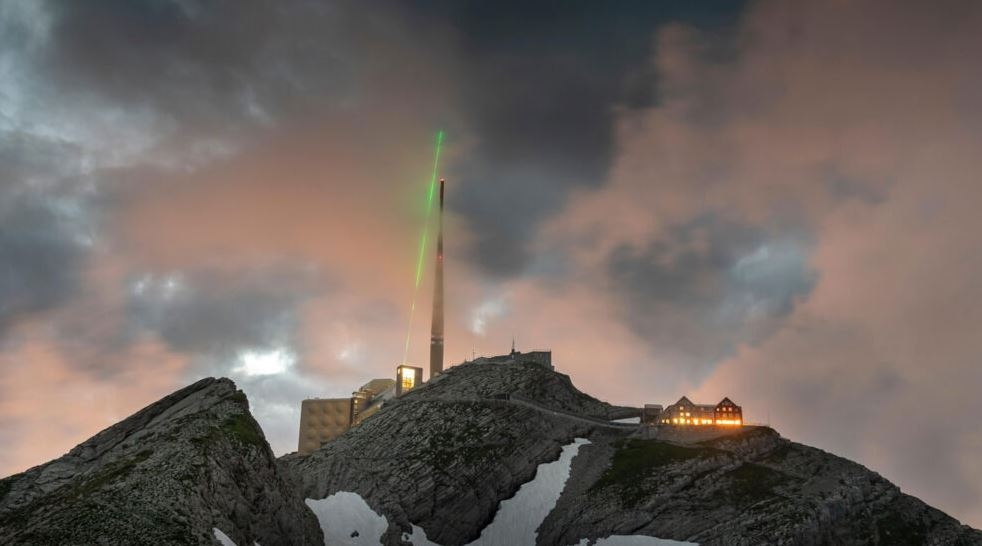Scientists have used lasers to reroute lightning bolts in a real-world storm for the first time, according to a study published in Nature Photonics. The team, led by physicist Aurélien Houard of the Institut Polytechnique de Paris, set up a high-power laser on a mountain in Switzerland near a telecommunications tower that is struck by lightning around 100 times each year. The laser fired short bursts of infrared light at the clouds about 1,000 times per second, creating a channel of low-density, charged plasma that helped to attract lightning. The tower was hit by lightning four times while the laser was on and one of these strikes was captured by high-speed cameras which showed the lightning zigzagging down from the clouds and following the laser light for around 50 meters toward the tower’s lightning rod.
The most common anti-lightning technology is the lightning rod, a metal pole rooted to the ground that attracts lightning to it, feeding that electricity safely into the earth. However, the area shielded by a lightning rod is limited by the rod’s height. “If you want to protect some large infrastructure, like an airport or a launching pad for rockets or a wind farm then you would need, for good protection, a lightning rod of kilometer size, or hundreds of meters,” said Aurélien Howard.
While the experiment was a success, the researchers are still working on making the technology more practical. The team is now working on a way to make the laser beam more focused and to reduce the amount of power required to conduct the lightning, which currently requires a tremendous amount of energy. The researchers also need to find a way to make the laser beam visible to pilots, so they can avoid flying into it.
This technology could be used in several ways in the future, including protecting large infrastructures like airports, launching pads for rockets and wind farms, as well as protecting people and buildings during thunderstorms. It could also be used to study lightning in more detail, to help improve our understanding of the phenomenon.
Overall, the study demonstrates that it is possible to manipulate lightning with lasers in real-world conditions, and it could be a step forward in finding new ways to protect people and infrastructure from lightning strikes. While the technology is still in the early stages of development and more research is needed before it can be implemented on a larger scale, the results of the study are very promising and could lead to new ways of protecting people and infrastructure from lightning strikes in the future.

